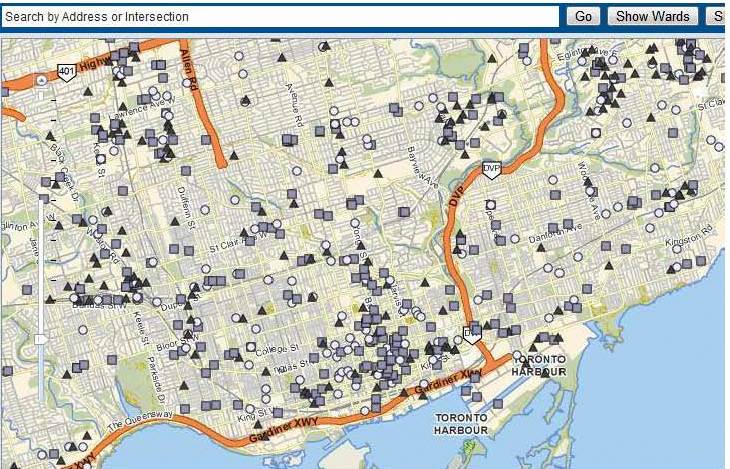Also discussed here : ChemTRAC – Improving Toronto's Air: 2014 Annual Report (David McKeown, Medical Officer of Health, Toronto Board of Health, Jun. 13, 2014)
And here: Toronto Public Health Reveals Local Air Pollution Sources (Jennifer Kalnins Temple, Envirolaw, Jul. 10, 2014)
Today we review the third annual report from Toronto’s Medical Officer of Health on the monitoring of local industrial air pollutants, a program (ChemTRAC) that requires local industries to emissions of 25 specific pollutants- the top three of which are VOCs, NOx and PM2.5. The Health Board estimates that of the 1300 deaths caused by air pollution each year, local industry is responsible for 120, in addition to 200 hospitalizations. This not only underlines the importance of the program but also allows for identification of sources of health risks not previously defined- the mercury releases from incineration of human remains at crematoria for example- and allows companies to take measure to reduce the release of critical pollutants. A large majority (90%) of the reporting companies found the ChemTRAC program helpful and 2/3s found that the program helped them to reduce harmful emissions The only question one might ask- why is this not required in other cities, especially large ones with industrial pollution within their boundaries?

Key Quotes :
“ChemTRAC provides more information on releases of highly toxic substances in comparison to existing programs, like NPRI. Last year, ChemTRAC data was accessed almost 10,000 times online, making it one of the top downloaded datasets from Toronto’s Open Data site. This information provides the public with valuable insights on key chemicals in their community and will help Toronto Public Health design better initiatives to improve Toronto’s air.”
“The ChemTRAC program..three key elements:
1) the Environmental Reporting and Disclosure Bylaw …requires businesses to report on their use and release of 25 priority substances ..;
2) a public disclosure system to inform the public about facilities in their neighbourhoods;
and 3) supports for businesses to reduce their use and release of the priority substances. “
“Toronto Public Health estimates that air pollution currently gives rise to 1300 premature deaths and 3550 hospitalizations in our city each year. Of those, pollution from local industries is responsible for about 120 of these deaths and 200 of these hospitalizations.”
“In its 2014 air pollution burden of illness update, ..pollutants emitted within Toronto’s borders contribute to 670 deaths and 1,970 hospitalizations, with local industries contributing about 18 percent of these deaths and 10 percent of these hospitalizations.”
“90 percent of businesses that used ChemTRAC support services found them helpful or very helpful…Sixty-four per cent of businesses surveyed in 2013 indicated that the ChemTRAC program has made them more aware of the measures they can take to reduce the release of use of priority substances. ”
“the 2013 ChemTRAC annual report identified mercury as a substance of high concern and crematoria as a major source of releases to air.”




No comments:
Post a Comment